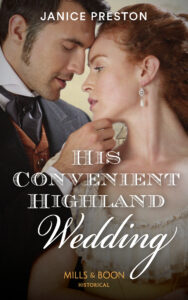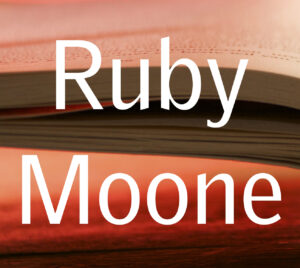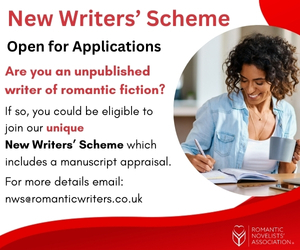The Lochmore Legacy – A Scottish Castle Through The Ages.
27 February 2019
I’m particularly delighted to welcome Janice Preston to the blog today as Janice is here not only to tell us about her new release, but to introduce a fantastic new series from Mills and Boon. Janice’s book, His Convenient Highland Wedding, is the first of four stories which will sweep us across time. Here’s Janice to tell us more about it.
 The Lochmore Legacy is what Mills & Boon call a continuity—a series of, in this case, 4 books that are linked in some way but with each one written by a different author. Of course, as you would expect, each book is a standalone romance and can be read and enjoyed as such, but the hope is that readers will enticed into reading the other titles in the series.
The Lochmore Legacy is what Mills & Boon call a continuity—a series of, in this case, 4 books that are linked in some way but with each one written by a different author. Of course, as you would expect, each book is a standalone romance and can be read and enjoyed as such, but the hope is that readers will enticed into reading the other titles in the series.
This is the second continuity I have been involved in, but it differs substantially from the first in the way the stories are linked. In The Governess Tales the books were connected through the friendship of the four heroines so the books are set more or less concurrently. In The Lochmore Legacy each romance is set in a different historical time period and the link is through setting (a Highland castle, Lochmore), two families/clans (the Lochmores and the McCrieffs), and the feud between the two.
The series opens in Victorian times with a marriage of convenience story, where a brooch is discovered in strange circumstances, and each unforgettable romance will reveal a little more of that brooch’s secret past as the reader travels back in time through the Regency, Tudor and Medieval eras.
The four titles are:
His Convenient Highland Wedding (Victorian) Janice Preston 21 March 2019
Unlaced by the Highland Duke (Regency) Lara Temple 18 April 2019
A Runaway Bride for the Highlander (Tudor) Elisabeth Hobbes 30 May2019
Secrets of a Highland Warrior (Medieval) Nicole Locke 27 June 2019
As I said, The Lochmore Legacy starts with His Convenient Highland Wedding, set in the mid-19th century, when Lady Flora McCrieff, having brought shame on her family, is married off to a stranger—rich but low-born Lachlan McNeill. Flora is dismayed to discover her new home is to be Lochmore Castle, the ancient family seat of the Lochmores, bitter enemies of the McCrieffs for centuries.
Flora’s confidence is at a low ebb after her public fall from grace and she struggles to communicate with Lachlan—a man of few words—despite the attraction that burns between them. Lachlan is determined to hide the truth of his past from his new bride, certain this pampered daughter of an earl could never accept the reality behind the successful image he portrays to the world.
But Flora and Lachlan grow closer as they work together to make a success of his fledgling whisky business and, as more of Lachlan’s shocking past is revealed, Flora vows to set free the emotions he’s locked away for so long.
Thank you so much for giving us a taste of what is to come, and an insight to your new release. Before you go, I’ve a few questions for you.
Collaborating on a book is always an interesting challenge. How did the four of you manage to work together to produce the stories?
I’ll keep this answer short as I know Lara will be writing more on this subject next month but it did help that the four of us were already friends (and still are!) through The Unlaced Historical Romance group on Facebook, which we run together with 5 other Mills and Boon historical authors. Briefly, though—when the editorial team came up with the idea for this continuity, they produced a ‘bible’, which provides the authors with an overview of the series as a whole and a brief outline of each story. This is essential to guard against ending up with four stories in the same romantic trope (eg four convenient marriages) but we were each then able to work up the basic premise of our own story, fleshing out our characters and developing the romance. As I said earlier, there is a mystery that runs through the four romances which is gradually unravelled as we go back in time and that in particular is where the collaboration becomes crucial, with a lot of communication. But more on that next month.
I can see from your other books that you usually write in the Regency era. How much research did you have to do to switch to Victorian? Did you make any fascinating discoveries?
It’s true that all my previous novels are set in the Regency era and, when I was asked to write this story (set in 1848), I was apprehensive. But, in the end, the research was so fascinating I had to stop myself from including too much in the book! Now, that’s not something I normally suffer from and, in writing this book, I realise that’s because I—and many readers—are so familiar with the Regency era in romantic fiction that little explanation is needed to provide an authentic backdrop. Scotland in 1848, to me, was something of an unknown quantity.
So, apart from the essential research into the fashion, food, decor, furniture and architecture of that era, I found myself reading about the Highland clearances, which were still ongoing; the potato famine, which caused mass Irish immigration to Glasgow; industry, including ship-building on the Clyde and whisky distilleries; transport—the railways, plus the ferry steamers that served the Highlands and Islands; the Crinan Canal (Lochmore Castle is situated on a fictional stretch of the west coast); the transportation of criminals to Australia; the wave of revolutions that swept Europe in 1848; Queen Victoria and her love of Scotland; Victorian philanthropy; prostitution in Glasgow and Edinburgh… I really could go on!
I lost many days disappearing into that well-known rabbit warren that we writers call research and, although it was a little overwhelming at times, all of it was fascinating, especially learning about the history of whisky-making, the different types of stills and the distillation of malt and grain whisky.
One of the wonderful things about historical novels is how actual events are woven into the story. How did you approach this for His Convenient Highland Wedding?
The main historic events that impact my story were the Highland Clearances and the Industrial Revolution. They form the backdrop, although it is more the catastrophic consequences of the Clearances and how they have shaped Lachlan’s life and character that I explore rather than the events themselves. I’ve also tried to give a flavour of the dreadful poverty of the time, and what can happen to a young widow with a baby when she finds herself alone and in debt—a theme I’ve explored before in my novels. Women had a tough time in the past!
I also decided to Google Scotland October 1848 to see if there was anything specific I could use in my story, but I wasn’t convinced I would discover anything much. I was wrong!
I was pondering a scene where my heroine could be shunned (because of her past disgrace)—difficult to achieve in an isolated Scottish castle—so I decided to send my newly-married couple to a house party. That google search revealed one of those nuggets of information I love—Frederic Chopin performed in Edinburgh on October 4th 1848, during the Caledonian Rout. That was a little early for my story, and it didn’t suit my purpose for my couple to be in Edinburgh so early in their marriage, but further research revealed that Chopin had several aristocratic connections in Scotland and stayed with some of them before his return to London, and so (of course!) he played at my fictional house party. And his Edinburgh performance provided a nice little bit of bitchiness for Flora’s former friends to goad her with!
I also discovered that Queen Victoria and Prince Albert sailed the Crinan Canal (which afterwards became known as The Royal Route) in 1847. They met the Royal Yacht at Crinan prior to sailing up the west coast to the Highlands and Islands. This was the year before my story, but it was too good not to use. And so, when the yacht sailed further up the west coast, I had them stop for the night at Castle McCrieff, Flora’s family home, thus giving Flora a chance to meet them and to tell Lachlan about them and their visit.
In both those cases, the people were in the right place at the right time and it was possible to weave in entirely imaginary scenarios where they could impact both my story and my characters.
I’ve always loved to use real facts, places and people in my stories where possible but, usually, these are not big, well-known facts and people, but little nuggets of information that come to light during my research.
So, for instance, I discovered the passenger steamer from Glasgow to Ardrishaig—a lochside village at the southern end of the Crinan Canal—was The Pioneer in 1848, and it left Glasgow at 6 a.m. And the horse-drawn track boat that ferried passengers along the canal was the Sunbeam. And The Susan, which in my story transported convicts to Australia in 1834, actually did exactly that.
I get a real kick out of including those little nuggets in my books—even if most readers will never even realise they are there.
Thank you so much for sharing this with us today. It sounds incredibly interesting. I can’t wait to read your book and look for the little historical facts.
Author details:
 Janice Preston writes emotional and sensual historical romance. Although all her novels are standalone reads, she loves to write stories set in the same Regency world, and many of her books include book-hopping characters.
Janice Preston writes emotional and sensual historical romance. Although all her novels are standalone reads, she loves to write stories set in the same Regency world, and many of her books include book-hopping characters.
Janice grew up in London but now lives in the Midlands with her husband and two cats. When she isn’t writing she enjoys reading, history, swimming, pottering about the garden when the sun is shining, and travelling whenever she can. She fuels her imagination with endless cups of coffee, is far too keen on unhealthy food, and is an expert procrastinator.
Here’s where you can find more about her.
https://www.facebook.com/janice.preston.author/
https://twitter.com/JaniceGPreston
https://www.instagram.com/janicegpreston
Interviewer details:
 Ruby Moone writes lives in the wilds of Lancashire with her husband and writes historical and contemporary romance. At school, her teachers said that she lived with her head in the clouds, and if she didn’t stop daydreaming, she would never get anywhere. She never did stop daydreaming, and after years of happily living in the clouds, she decided to write the stories down.
Ruby Moone writes lives in the wilds of Lancashire with her husband and writes historical and contemporary romance. At school, her teachers said that she lived with her head in the clouds, and if she didn’t stop daydreaming, she would never get anywhere. She never did stop daydreaming, and after years of happily living in the clouds, she decided to write the stories down.
https://www.facebook.com/RubyMoone/



